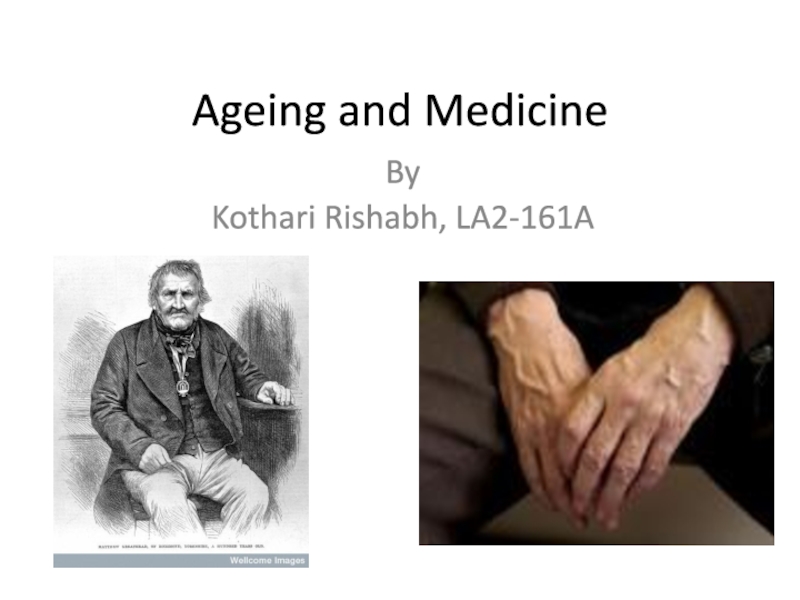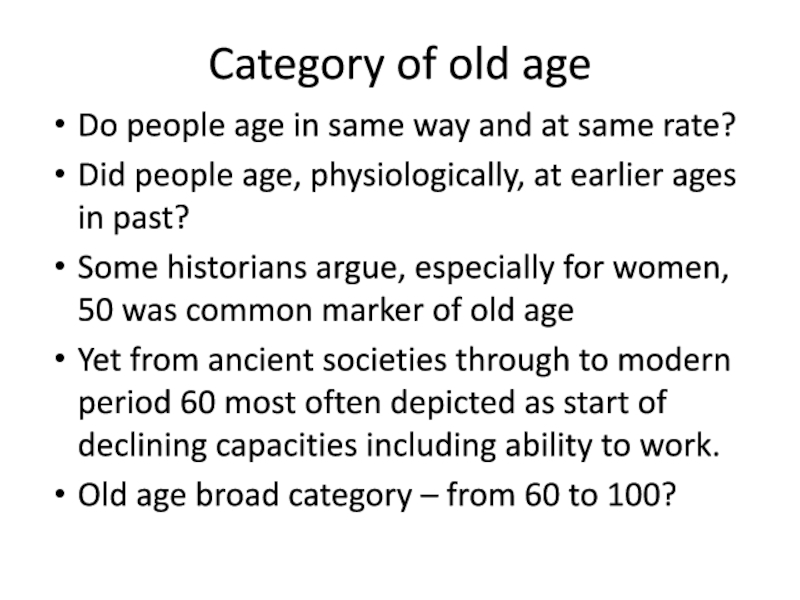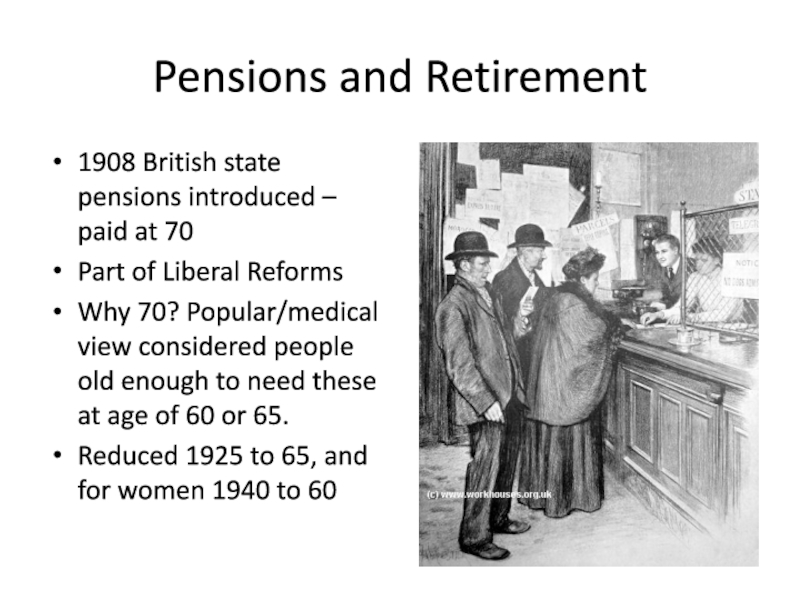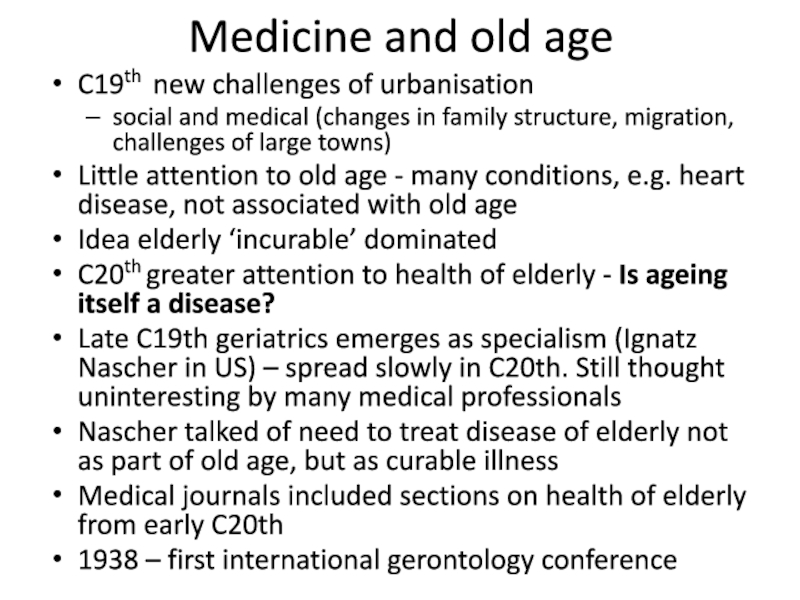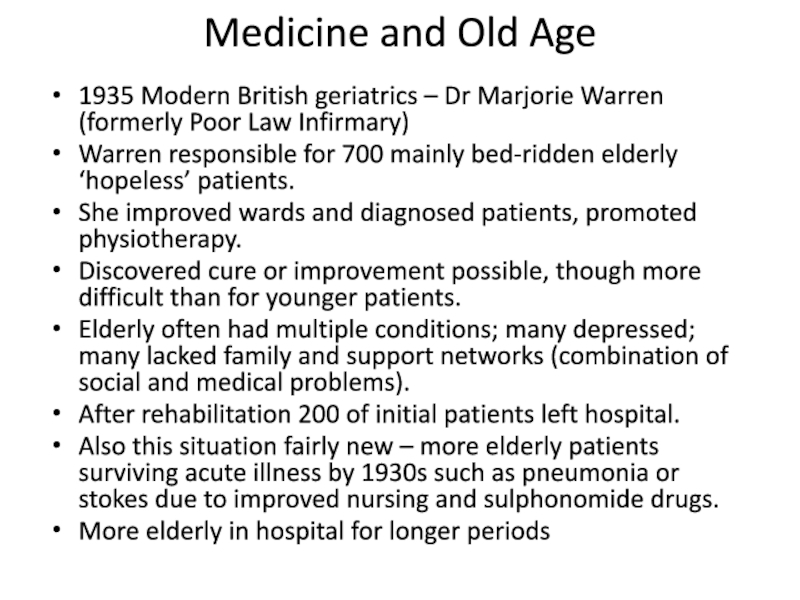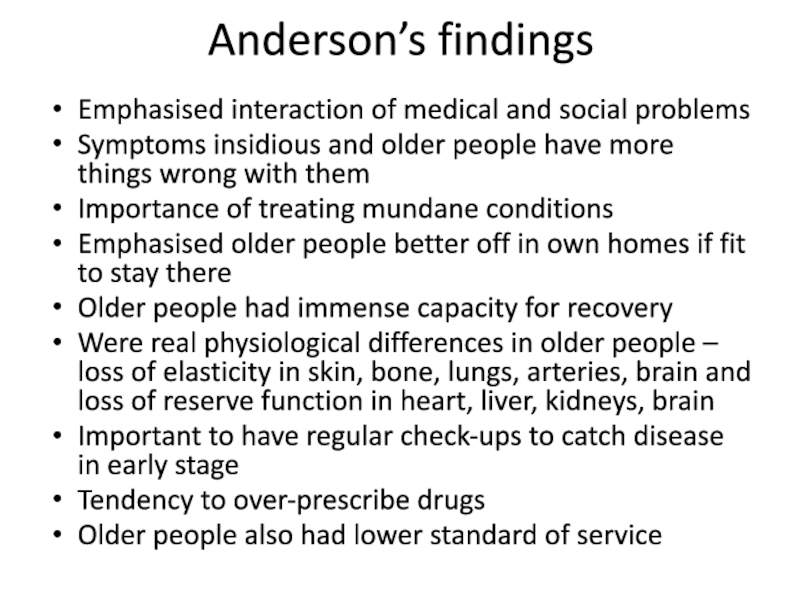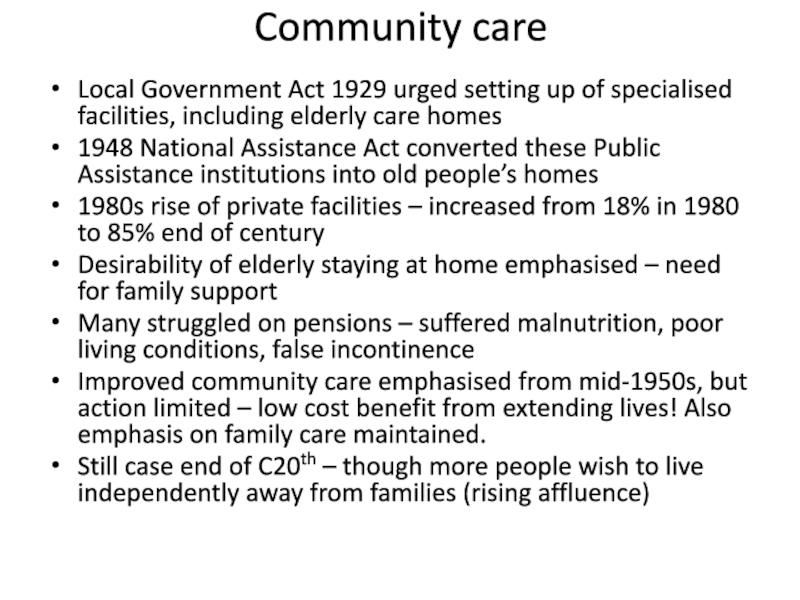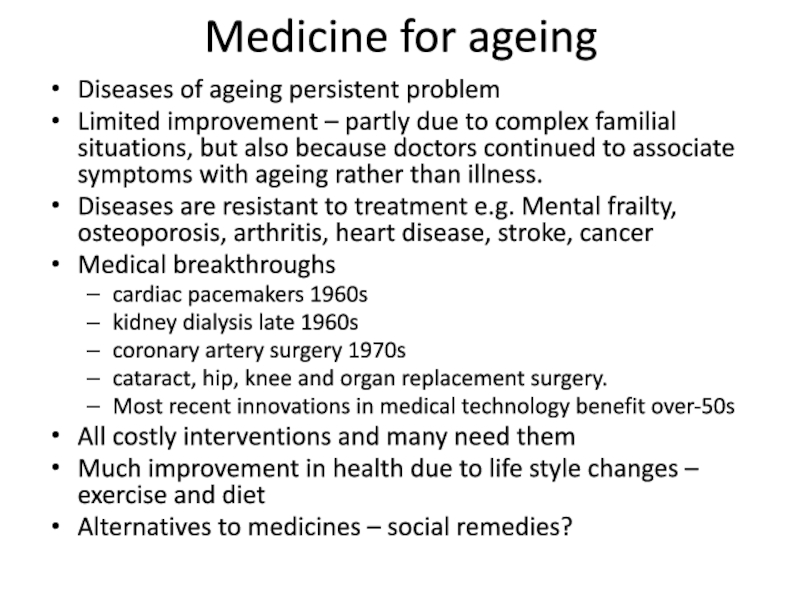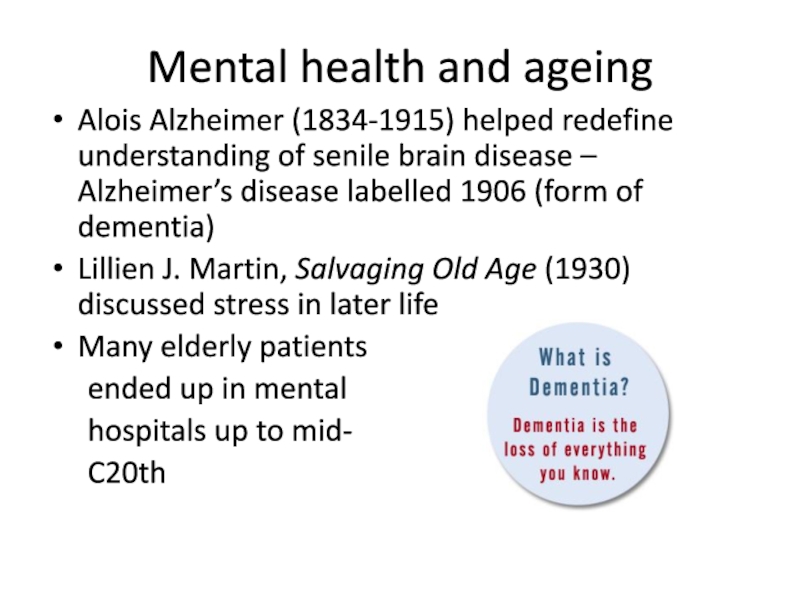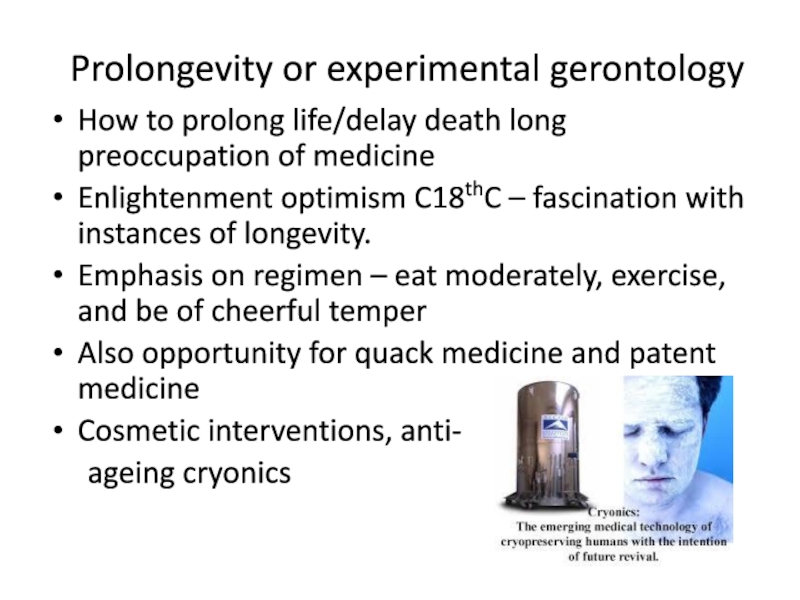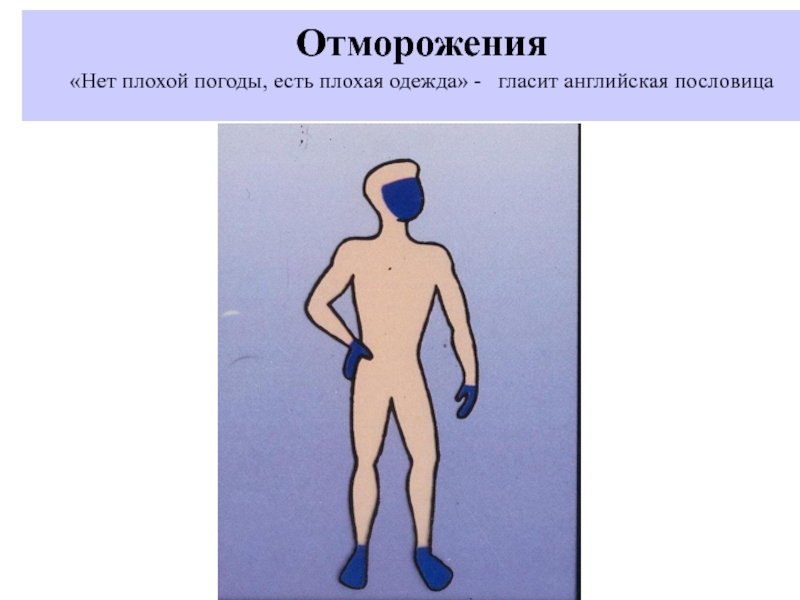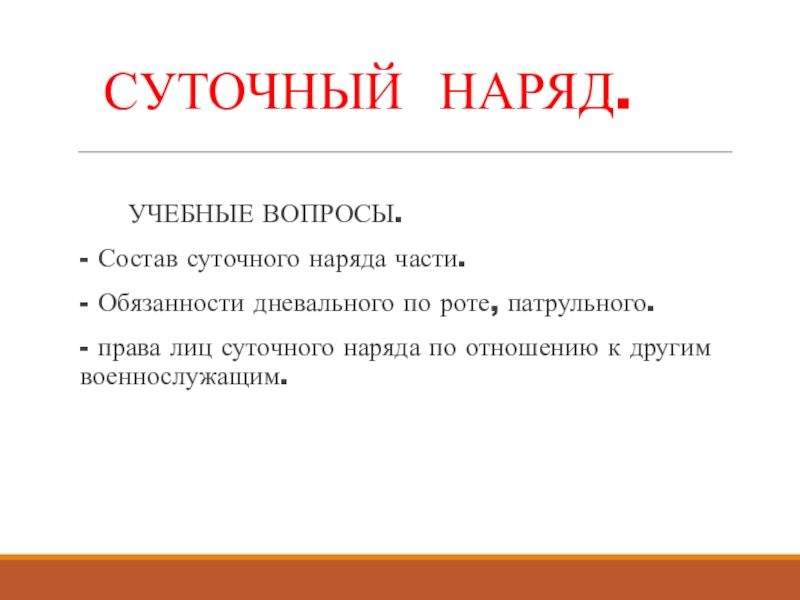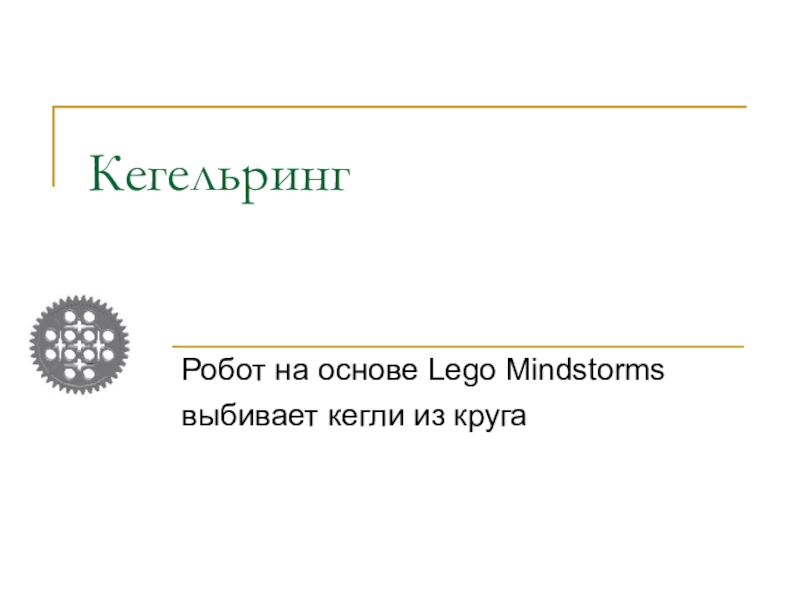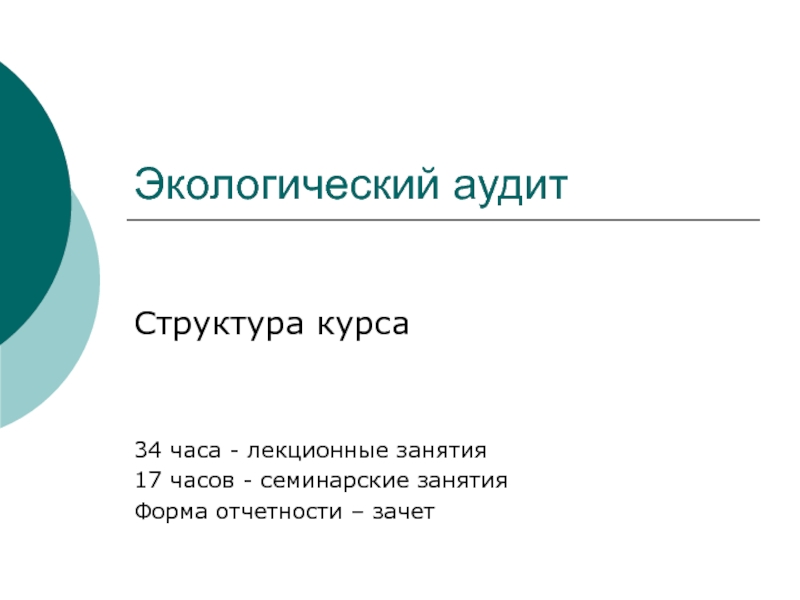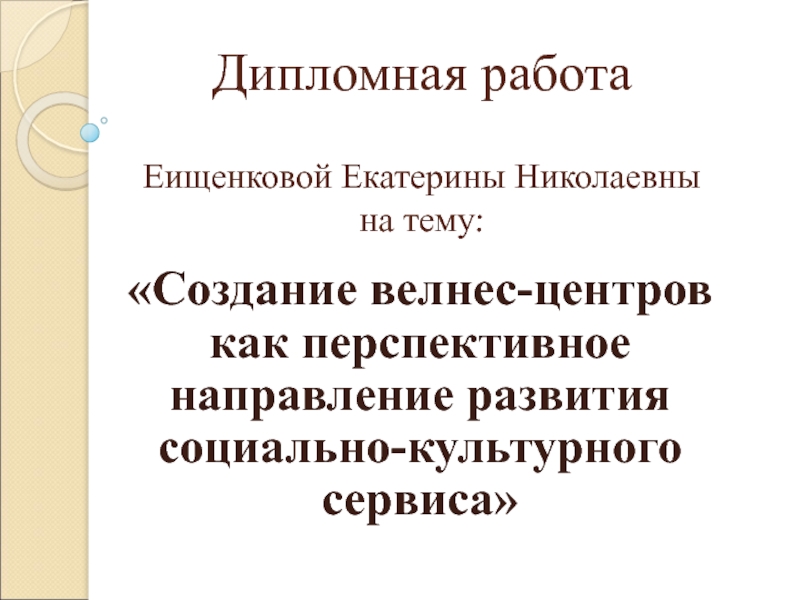Слайд 1Ageing and Medicine
By
Kothari Rishabh, LA2-161A
Слайд 2Category of old age
Do people age in same way and
at same rate?
Did people age, physiologically, at earlier ages in
past?
Some historians argue, especially for women, 50 was common marker of old age
Yet from ancient societies through to modern period 60 most often depicted as start of declining capacities including ability to work.
Old age broad category – from 60 to 100?
Слайд 3Change over time/longevity
C20th – first time it’s normal to grow
old
C16th-18th – over 65 = 8-10% population
C19th – over 65
= 5% (N.B. life expectancy figures confused by high IMR)
1900 - over 65 = 5% population aged over 65,
1951 – over 65 = 11%
1991 – over 65 = 16% (of whom one-quarter aged 80+)
Aging a largely female experience since 1837 but liable to worse old age
Decline of IMR and mortality e.g. from disease, meant proportion of older people in society increased
But many healthier in old age – lifetime experience of health tends to be better, and people ‘age later’
None the less striking economic and social implications – cost and care
Слайд 4Pensions and Retirement
1908 British state pensions introduced – paid at
70
Part of Liberal Reforms
Why 70? Popular/medical view considered people old
enough to need these at age of 60 or 65.
Reduced 1925 to 65, and for women 1940 to 60
Слайд 5Medicine and old age
C19th new challenges of urbanisation
social and medical
(changes in family structure, migration, challenges of large towns)
Little attention
to old age - many conditions, e.g. heart disease, not associated with old age
Idea elderly ‘incurable’ dominated
C20th greater attention to health of elderly - Is ageing itself a disease?
Late C19th geriatrics emerges as specialism (Ignatz Nascher in US) – spread slowly in C20th. Still thought uninteresting by many medical professionals
Nascher talked of need to treat disease of elderly not as part of old age, but as curable illness
Medical journals included sections on health of elderly from early C20th
1938 – first international gerontology conference
Слайд 6Medicine and Old Age
1935 Modern British geriatrics – Dr Marjorie
Warren (formerly Poor Law Infirmary)
Warren responsible for 700 mainly bed-ridden
elderly ‘hopeless’ patients.
She improved wards and diagnosed patients, promoted physiotherapy.
Discovered cure or improvement possible, though more difficult than for younger patients.
Elderly often had multiple conditions; many depressed; many lacked family and support networks (combination of social and medical problems).
After rehabilitation 200 of initial patients left hospital.
Also this situation fairly new – more elderly patients surviving acute illness by 1930s such as pneumonia or stokes due to improved nursing and sulphonomide drugs.
More elderly in hospital for longer periods
Слайд 7‘Normal’ Ageing (in post-war years)
To what degree was old age
unavoidably associated with ill-health?
Nuffield Foundation survey 1945-7 Dr J.H. Sheldon,
Wolverhampton.
2.5% confined to bed, 8.5% to houses, 22.5% to immediate neighbourhood – increased with age and rare below age of 70
Few had much contact with doctors
Before 70 ailments much the same as remainder of adult population
After 70 specific set of problems emerged e.g. weakness, loss of confidence, spondylitis (inflammation of vertebrae) – mix of social and medical
Women had poorer health, though more vigorous – carried on with domestic tasks
Many older people disabled not by major illness, but minor and curable conditions – bad feet, defective vision and hearing, incontinence
Concluded health of elderly better outside of institutions
Depression often caused by loneliness, economic worries, poor general health or limited mobility
Слайд 8Anderson’s findings
Emphasised interaction of medical and social problems
Symptoms insidious and
older people have more things wrong with them
Importance of treating
mundane conditions
Emphasised older people better off in own homes if fit to stay there
Older people had immense capacity for recovery
Were real physiological differences in older people – loss of elasticity in skin, bone, lungs, arteries, brain and loss of reserve function in heart, liver, kidneys, brain
Important to have regular check-ups to catch disease in early stage
Tendency to over-prescribe drugs
Older people also had lower standard of service
Слайд 9Community care
Local Government Act 1929 urged setting up of specialised
facilities, including elderly care homes
1948 National Assistance Act converted these
Public Assistance institutions into old people’s homes
1980s rise of private facilities – increased from 18% in 1980 to 85% end of century
Desirability of elderly staying at home emphasised – need for family support
Many struggled on pensions – suffered malnutrition, poor living conditions, false incontinence
Improved community care emphasised from mid-1950s, but action limited – low cost benefit from extending lives! Also emphasis on family care maintained.
Still case end of C20th – though more people wish to live independently away from families (rising affluence)
Слайд 10Medicine for ageing
Diseases of ageing persistent problem
Limited improvement – partly
due to complex familial situations, but also because doctors continued
to associate symptoms with ageing rather than illness.
Diseases are resistant to treatment e.g. Mental frailty, osteoporosis, arthritis, heart disease, stroke, cancer
Medical breakthroughs
cardiac pacemakers 1960s
kidney dialysis late 1960s
coronary artery surgery 1970s
cataract, hip, knee and organ replacement surgery.
Most recent innovations in medical technology benefit over-50s
All costly interventions and many need them
Much improvement in health due to life style changes – exercise and diet
Alternatives to medicines – social remedies?
Слайд 11Mental health and ageing
Alois Alzheimer (1834-1915) helped redefine understanding of
senile brain disease – Alzheimer’s disease labelled 1906 (form of
dementia)
Lillien J. Martin, Salvaging Old Age (1930) discussed stress in later life
Many elderly patients
ended up in mental
hospitals up to mid-
C20th
Слайд 12Prolongevity or experimental gerontology
How to prolong life/delay death long preoccupation
of medicine
Enlightenment optimism C18thC – fascination with instances of longevity.
Emphasis
on regimen – eat moderately, exercise, and be of cheerful temper
Also opportunity for quack medicine and patent medicine
Cosmetic interventions, anti-
ageing cryonics
Слайд 13Ethical dilemmas
Debates about aged-based rationing of treatment e.g. in cancer
care
Medicine now able to keep patients technically ‘alive’ indefinitely….
Still limited
services e.g. for counselling, social services stretched
Britain has poor results – higher mortality rates e.g. for heart disease and stroke than other developed countries
Concerns about the rise in dementia – people kept alive with diminishing functional capacity
Scandals...
